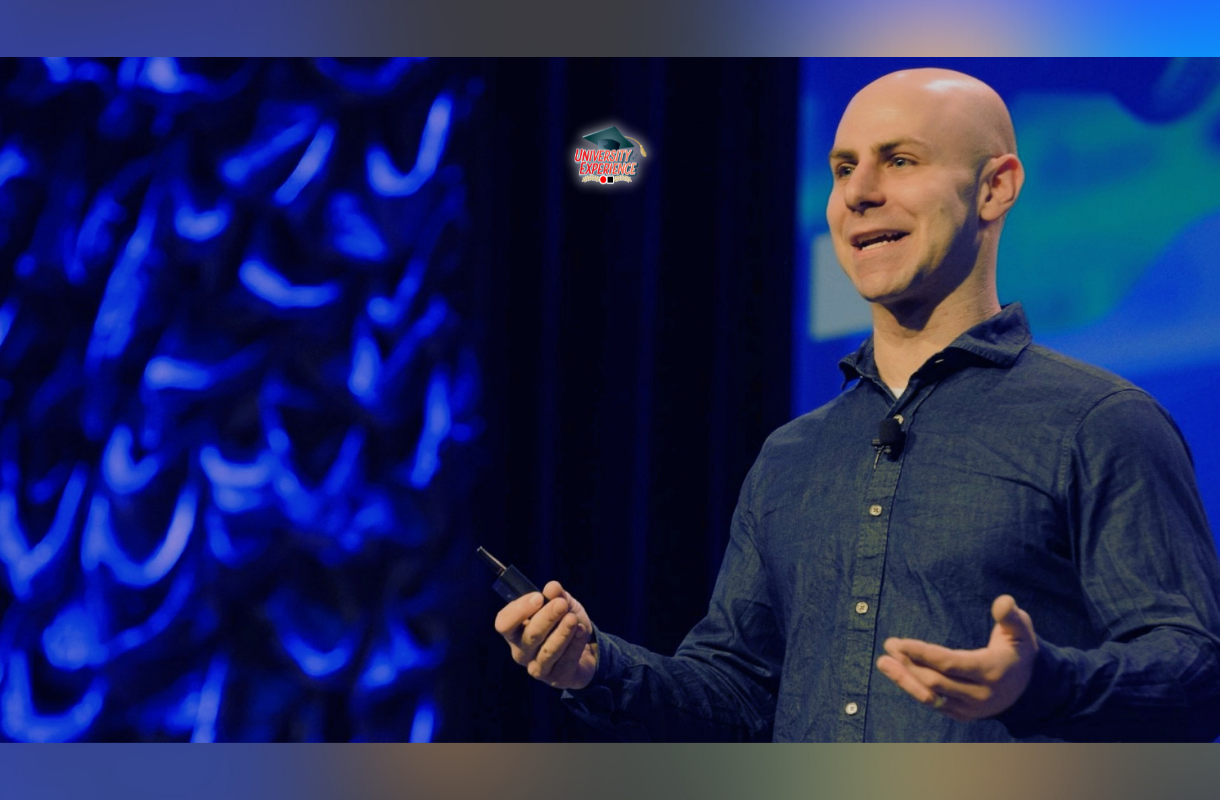By Manuel “Bobby” Orig, Director, ApoAgua
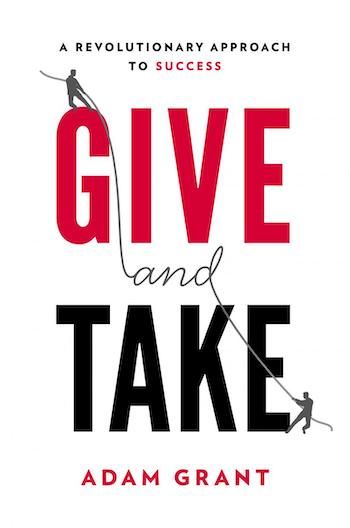
Many of us assume that because givers readily extend help to others without counting the cost, they end up being exploited. As a result, givers invariably end up at the bottom of the success ladder. While this is true, this gem of a book by Adam Grant, backed by cutting-edge research, proves that it is also givers who emerge at the top of the success ladder. That is because success depends heavily on how we approach our interactions with other people. The defining feature of givers is they are collaborators. They take on tasks that are in their group’s best interest, not necessarily their personal interest. In the words of the author, “givers create a ripple effect that also enhances the success of the people around them.”
In my 47 years of working with six companies in the Aboitiz Group, I can attest that people who adopt giver behavior as their dominant reciprocity style at work are among are the most successful and respected.
I have been encouraged to write this summary to pay the highest tribute to the givers in the Aboitiz Group. But if you are not yet a giver, I urge you to read this book that highlights the author’s extensive study about givers, takers, and matchers. And consider the author’s profound findings. His refreshing verdict: “The best way to get to the top is not just to focus on your solo journey but to bring others with you. Successful givers got to the top without cutting others down, finding ways of expanding the pie that benefit themselves and the people around them.”
It has received praise from none other than Robert Sutton, author of ‘Good Boss, Bad Boss,’ who had nothing but glowing words for the book.
‘Give and Take’ might be the most important book of this young century. As insightful and entertaining as Malcolm Gladwell at his best, this book has profound implications for how we manage our careers, deal with our friends and relatives, raise our children, design our institutions. This gem is a joy to read, and it shatters the myth that greed is the path to success.
—Robert Sutton, Professor of Management Science, Stanford University
About the Author

Adam Grant is an organizational psychologist at Wharton Business School, where he has been a top-rated professor for seven years. He is an expert in how we can find motivation and meaning, and lead more generous and creative lives.
He is the #1 New York Times bestselling author of four books that have sold over 2 million copies and been translated into 35 languages: Give and Take, Originals, Option B, and Power Moves.
His books have been recognized as among the year’s best by the Financial Times, Harvard Business Review, and the Wall Street Journal and been praised by J.J. Abrams, Richard Branson, Bill and Melinda Gates and Malcolm Gladwell.
Introduction
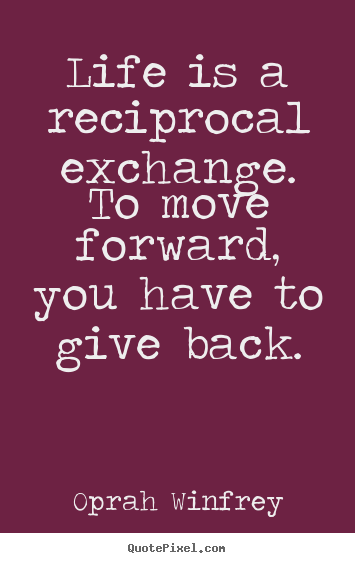
According to conventional wisdom, highly successful people have three things in common: motivation, ability, and opportunity. If we want to succeed, we need a combination of hard work, talent, and luck.
There’s a fourth ingredient that’s critical but often neglected: success depends heavily on how we approach our interactions with other people. Every time we interact with another person at work, we have a choice to make:
- Do we claim as much value as we can? OR
- Do we contribute value without worrying about what we receive in return?
Our choices have staggering consequences for success. Social scientists have discovered that people differ dramatically in their preferences for reciprocity – their desired mix of taking and giving. Two kinds of people fall at opposite ends of the reciprocity spectrum at work. The author calls them takers and givers.
Takers have a distinctive signature: they like to get more than they give. They tilt reciprocity in their own favor, putting their own interests ahead of others’ needs. They feel that to succeed, they need to be better than others. To prove their competence, they self-promote and make sure they get plenty of credit for their efforts.
Givers are the opposite of takers, they are givers at the workplace. They tilt reciprocity in the other direction, preferring to give more than they get. Whereas takers tend to be self-focused, evaluating what other people can offer them, givers are other-focused, paying more attention to what other people need from them.
These preferences are not about money: givers and takers are not distinguished by how much they donate to charity or the compensation they command from their employers. Rather, givers and takers differ in their attitudes and actions towards other people.
If you’re a taker, you help others strategically, when the benefits to you outweigh the personal costs.
If you’re a giver, you help whenever the benefits to others exceed the personal costs. Or givers might not think of the personal costs at all, helping others without expecting anything in return.
If you are a giver at work, you simply strive to be generous in sharing your time, energy, knowledge, skills, ideas, and connections with other people who can benefit from them.
Givers and takers are not distinguished by how much they donate to charity or the compensation they command from their employers. Rather, givers and takers differ in their attitudes and actions towards other people.
Being a giver does not require extraordinary acts of sacrifice. It just involves a focus on acting in the interests of others, such as giving help, providing mentoring, sharing credit, or making connection for others.
But in the workplace, give and take becomes more complicated. Professionally, few of us act purely like givers and takers, adopting a third style instead. We become matchers, striving to preserve an equal balance of giving and getting.
Matchers operate on the principle of fairness: when they help others, they protect themselves by seeking reciprocity. If you’re a matcher, you believe in tit for tat, your relationships are governed by even exchange of favors.
Giving, taking, and matching are three fundamental styles of social interaction, but the lines between them are not hard and fast. You might find that you shift from one reciprocity style to another as you travel across different work roles and relationships. It would not be surprising if you act like a taker when negotiating your salary, a giver when mentoring someone, and a matcher when sharing expertise with a colleague.
Evidence shows that at work, the vast majority of people develop a primary reciprocity style, which captures how they approach most of the people most of the time. And this primary style can play as much of a role in our success as hard work, talent, and luck.
Professionally, few of us act purely like givers and takers, adopting a third style instead. We become matchers, striving to preserve an equal balance of giving and getting.
Professionally, all three reciprocity styles have their own benefits and drawbacks. But there is one style that proves most costly than the other two. Research demonstrates that givers sink to the bottom of the success ladder. Across a wide range of important occupations, givers are at a disadvantage—they make others better off but sacrifice their own success in the process.
Across occupations, it appears that givers are just too caring, too trusting, and too willing to sacrifice their own interests for the benefit of others. There’s evidence that compared with takers, on average, givers earn 14 percent less money, have twice the risk of becoming victims of crimes, and are judged as 22 percent less powerful and dominant.
The Worst and Best Performers

So if givers are most likely to land at the bottom of the success ladder, who’s at the top – takers or matchers? Neither. When the author look at the data, he discovered a surprising pattern”: It’s the givers again.
The worst performers and the best performers are givers: takers and matchers are more likely to land in the middle.
This pattern holds up across the board. Belgian medical students with the lowest grades have unusually high giver scores, but so do students with the highest grades. Over the course of medical school, being a giver accounts for 11 percent higher grades.
Research demonstrates that givers sink to the bottom of the success ladder. Across a wide range of important occupations, givers are at a disadvantage—they make others better off but sacrifice their own success in the process.
Even in sales, the author found that the least productive salespeople had 25 percent higher giver scores than average performers – but so did the most productive salespeople. The top performers were givers, and they averaged 50 percent more annual revenue than the takers and matchers.
Givers dominate the bottom and the top of the success ladder. Across occupations, if you examine the link between reciprocity styles and success, the givers are more likely to become champs. These givers reverse the popular plan of succeeding first and giving back later, raising the possibility that those who give first are often the best positioned for success later.
But some givers do become pushovers and doormats, and we need to explore what separates the champs from the chumps. The answer is less about raw talent or aptitude, and more about the strategies the givers use and the choices they make.
We all have our goals for our individual achievements, and it turns out that successful givers are every bit as ambitious as takers and matchers. They simply have a different way of pursuing their goals.
What’s Unique About Givers

So what is unique about the success of givers? It is clear that givers, takers, and matchers all can – and do – achieve success. But there’s something distinctive that happens when givers succeed: it spreads and cascades.
When takers win, there’s usually someone who loses. Research shows that people tend to envy successful takers and look for ways to knock them down a notch.
In contrast, when givers win, people are rooting for them and supporting them. Givers succeed in a way that creates a ripple effect, enhancing the success of people around them. The difference lies in how giver success creates value, instead of just claiming it. As venture capitalist Randy Komisar explains, “It’s easier to win if everybody wants you to win. If you don’t make enemies out there, it’s easier to succeed.”
It takes time for givers to build goodwill and trust, but eventually, they establish reputations and relationships that enhance their success.
The giver advantage grows over time. In the long run, giving can be every bit as powerful as it is dangerous. As Chip Conley, the renowned entrepreneur who founded Joie de Vivre Hotels explains, “Being a giver is not good for a 100-yard dash, but it’s valuable in a marathon.”
When givers win, people are rooting for them and supporting them. Givers succeed in a way that creates a ripple effect, enhancing the success of people around them.
Bobby’s notes:
I summarized Chip Conley’s standard for measuring success in life and business in my article for Aboitiz Eyes University of Experience titled, The Power of Intangibles.
In the old days, the marathon took a long time to run. Without telephones, the Internet and high-speed transportation, building relationships and reputations was a slow process. Conley believes that in today’s connected world, where relationships and reputations are more visible, givers can accelerate their pace.
That the long run is getting shorter is not the only force that makes giving more professionally productive. We live in an era when massive changes in the structure of work – and the technology that shapes it – have further amplified the advantages of being a giver:
- Today, more than half of American and European companies regularly use teams to get work done. We rely on teams to build cars and houses, perform surgeries, fly planes, fight wars, and provide consulting services. Teams depend on givers to share information, volunteer for unpopular tasks, and provide help.
- Even if you don’t work in a team, odds are that you hold a service job. Most of our grandparents worked in independent jobs producing goods. They did not always need to collaborate with other people, so it was fairly inefficient to be a giver. But now, a high percentage of people work in interconnected jobs providing services to others. In the 1980s, the service sector made up about half of the world’s gross domestic product (GDP). By 1995, the service sector was responsible for nearly two thirds of the world’s GDP.
As the service sector continues to expand, more and more people are placing a premium on providers who have established relationships and reputations as givers. Whether your reciprocity style is primarily a giver, taker, or matcher, it is a good bet that you want your key service provider to be givers. You hope your doctor, lawyer, teacher, dentist, plumber, and real estate agent will focus on contributing value to you, not on claiming value from you.
Although technological and organizational changes have made giving more advantageous, there’s one feature of giving that’s more timeless: when we reflect on our guiding principles in life, many of us are intuitively drawn to giving.
Over the past three decades, the esteemed psychologist Shalom Schwartz has studied values and guiding principles that matter to people around the world. One of his studies surveyed reasonably representative samples of thousands of adults in Australia, Chile, Finland, France, Germany, Israel, Malaysia, the Netherlands, South Africa, Spain, Sweden, and the United States. He translated his survey into a dozen of languages, and asked respondents to rate the importance of different values. Here is an example:
List 1
- Wealth (money, material possessions)
- Power (dominance, control over others)
- Pleasure (enjoying life)
- Winning (doing better than others)
List 2
- Helpfulness (working for the well-being others)
- Responsibility ( being dependable)
- Social justice (caring for the disadvantaged)
- Compassion (responding to the needs of others)
Takers favor values in List 1, whereas givers prioritize the values in List 2.
Schwartz wanted to know where most people would endorse giver values. Where the majority of people endorse giver values above taker values?
All of them. In all twelve countries, most people rate giving as their single most important value. They report caring more about giving than about power, achievement, excitement, freedom, tradition, conformity, security and pleasure. This was true in more than seventy different countries around the world. Giver values are the number one guiding principle in life to most people in most countries.
How Givers, Takers, and Matchers Build Networks
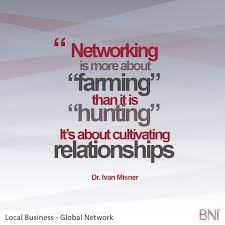
According to Brian Uzzi, a management professor at Northwestern University, networks come with three major advantages: private information, diverse skills, and power. By developing a strong network, people can gain invaluable access to knowledge, expertise, and influence.
Extensive research demonstrates that people with rich networks achieve higher performance ratings, get promoted faster, and earn more money. And because networks are based on interactions and relationships, they serve as a powerful prism for understanding the impact of reciprocity styles on success.
How do people relate to others in their networks, and what do they see as the purpose of networking?
The very notion of networking often has negative connotations. When we meet a new person who expresses enthusiasm about connecting, we frequently wonder whether he’s acting friendly because he’s genuinely interested in a relationship that will benefit both of us, or because he wants something from us.
At some point in your life, you’ve probably experienced the frustration of dealing with slick schmoozers who are nice to your face when they want a favor, but end up stabbing you in the back – or simply ignoring you – after they get what they want. This faker style of networking casts the entire enterprise as Machiavellian, a self-serving activity in which people make connections for the sole purpose of advancing their own interests.
On the other hand, givers and matchers often see networking as an appealing way to connect with new people and ideas. We meet many people throughout our professional and personal lives, and since we all have different knowledge and resources, it makes sense to turn to these people to exchange help, advice, and introductions.
This raises a fundamental question: Can people build networks that have breadth and depth using different reciprocity styles? Or does one style consistently create a richer network?
Givers, takers, and matchers develop fundamentally distinct networks, and their interactions within these networks have different characteristics and consequences. Ultimately, while givers and takers may have equally large networks, givers are able to produce far more lasting value through their networks.
In 2011, Fortune Magazine conducted extensive research to identify the best networker in the United States. The goal was to use online social networks to figure out who had the most connections to America’s most powerful people. The staff compiled a list of the Fortune 500 CEOs, as well as Fortune’s list of the 50 smartest people in technology, the 50 most powerful women, and the 40 hottest rising stars in business under age 40. Then they cross-referenced this list against LinkedIn’s entire database of more than 90 million members.
The winning networker was connected on LinkedIn to more of Fortune’s 640 movers and shakers than anyone on earth. The winner had more than 3,000 LinkedIn connections. This networker extraordinaire is a giver.
LinkedIn founder Reid Hoffman writes, “It seems counterintuitive, but the more altruistic your attitude, the more benefits you will gain from the relationship. If you set out to help others, you will rapidly reinforce your own reputation and expand your universe of possibilities.”
Spotting the Taker in Giver’s Clothing
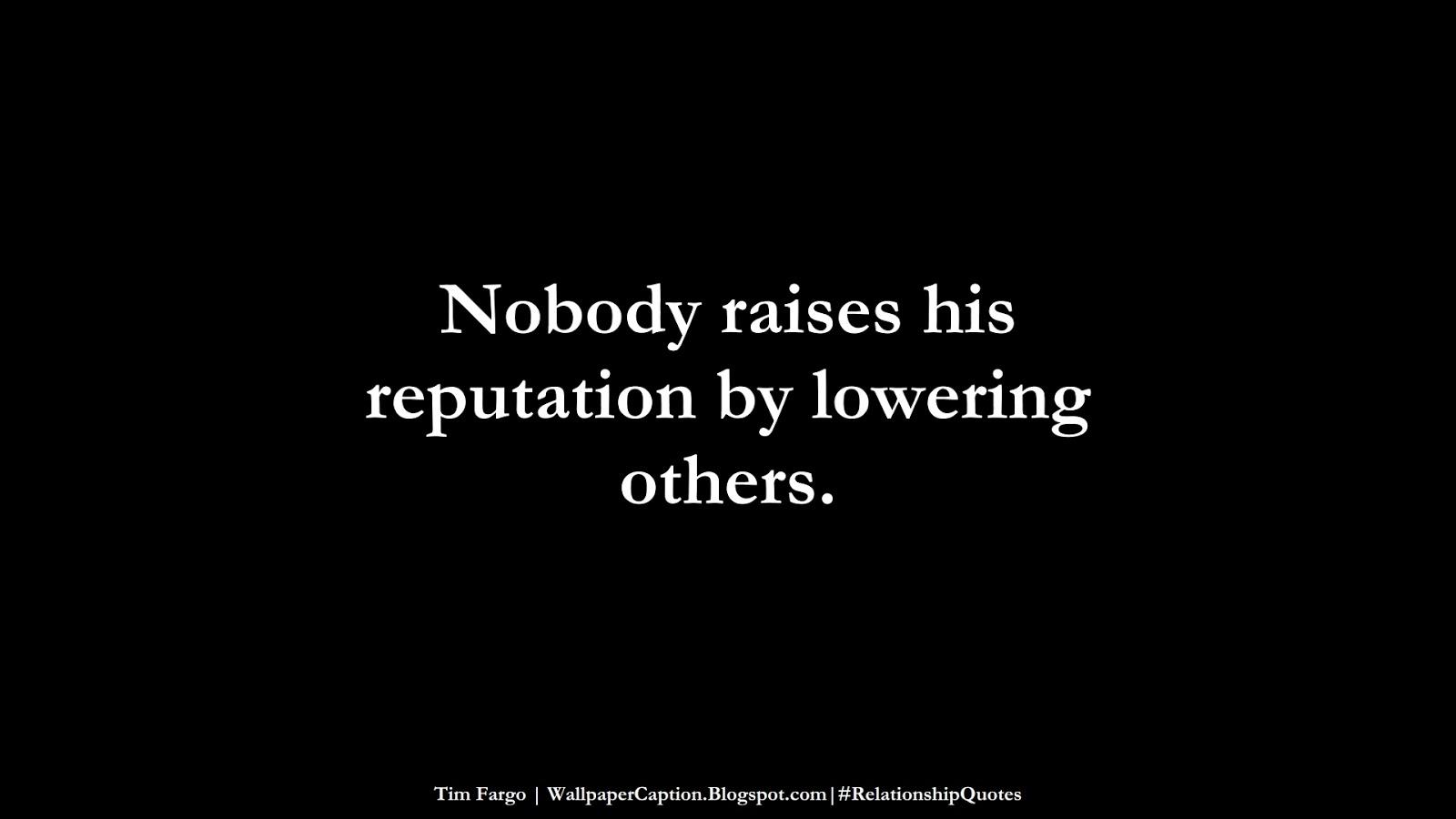
If you have ever put up your guard when meeting a new colleague, it’s probably because you thought you picked up on the scent of self-serving motives. When we see a taker coming, we protect ourselves by closing the door to our networks, withholding our trust and help. To avoid getting shut out, many takers become good fakers acting generously so that they can waltz into our networks disguised as givers or matchers.
As takers gain power, they pay less attention to how they are perceived by those below and next to them.
But it can be difficult for takers to keep up the façade in all of their interactions. Although takers tend to be dominant and controlling with subordinates, they are surprisingly submissive and deferential toward superiors. When takers deal with powerful people, they become convincing fakers. Takers want to be admired by influential superiors, so they go out of their way to charm and flatter. As a result, powerful people tend to form glowing first impressions of takers.
Takers may rise by kissing up, but they often fall by kicking down. Research shows that as people gain power, they feel large and in charge: less constrained and freer to express their natural tendencies.
As takers gain power, they pay less attention to how they are perceived by those below and next to them; they feel entitled to pursue self-serving goals and claim as much value as they can. Over time, treating peers and subordinates poorly jeopardizes their relationships and reputations. After all, most people are matchers: their core values emphasize fairness, equality, and reciprocity. When takers violate these principles, matchers in their networks believe in an eye for an eye, so they want to see justice served.
To illustrate, imagine you’re participating in a famous study led by Daniel Kahneman, the Nobel prize-winning psychologist at Princeton University. You’re playing what is known as the ultimatum game, and you sit down across the table from a stranger who has just been given $10. His task is to present you with a proposal about how the money will be divided between the two of you. It’s an ultimatum: you can either accept the money as proposed, or you can reject it, and both of you will get nothing. You might never see each other again, so he acts like a taker, keeping $8 and offering you only $2. What do you do?
In terms of pure profit, it’s rational for you to accept the offer. After all, $2 is better than nothing. But if you’re like most people, you reject it. You’re willing to sacrifice the money to punish the taker for being unfair, walking away with nothing to keep him from earning $8.
Why do we punish takers for being unfair? It’s not spite. We’re not getting revenge on takers for trying to take advantage of us. It’s about justice.
If you’re a matcher, you’ll also punish takers for acting unfairly toward other people.
As people gain power, they feel large and in charge: less constrained and freer to express their natural tendencies.
When reputational information suggests that someone has taker tendencies, we can withhold trust and avoid being exploited. Over time, as their reputations spread, takers end up cutting existing ties and burning bridges with potential new ties.
Wayne Baker, a University of Michigan sociologist and networking expert explains, “If we create networks with the sole intention of getting something, we won’t succeed. We can’t pursue the benefits of networks; the benefits ensue from investments in meaningful activities and relationships.”
The Transparent Network

In 2002, computer scientist Jonathan Abrams founded Friendster, created the world’s first online social network. Friendster made it possible for people to post their profiles online and broadcast their connections to the world.
In the following two years, entrepreneurs launched LinkedIn, Myspace, and Facebook. Strangers now have access to one another’s relationships and reputations.
By 2012, the world’s population reached seven billion. At the same time, Facebook’s active users approached a billion. This means that more than 10 percent of the people in the world are connected on Facebook.
The takers posted information that was rated as more self-promoting, self-absorbed, and self-important.
Before technological revolutions helped us communicate by phone and e-mail, and travel by car and plane, people had relatively manageable numbers of social ties in tightly connected, transparent circles. Within these insulated networks, people could easily gather reputational information and observe lekking, like male animals who show off their desirability as mates. As communication and transportation became easier, and the sheer size of the population grew, interactions became more dispersed and anonymous. Reputations and lekking became less visible.
Today, the Internet has made our world totally different. Now it’s much harder for takers to get away with being fakers, fooling people into thinking they are givers. We can now track down reputational information about our contacts by accessing public data-bases and discovering shared connections. Lekking in its many sizes and forms abounds in social network profiles.
In one study, psychologists asked people to fill out a survey measuring whether they were takers. Then, the psychologists sent strangers to visit their Facebook pages. The strangers were able to detect the takers with astonishing accuracy.
The takers posted information that was rated as more self-promoting, self-absorbed, and self-important. They featured quotes that were evaluated as boastful and arrogant. The takers had significantly more Facebook friends, racking up superficial connections so they could advertise their accomplishments and stay in touch to get favors, and posted vainer, more flattering pictures of themselves.
Says Howard Lee, the former head of South China at Groupon, one of a growing number of people who use social media to catch takers, “You can understand someone’s reputation at a peer level pretty quickly. When your relationships and reputations are visible to the world, it’s hard to achieve sustainable success as a taker.”
In Silicon Valley, a quiet man is taking transparent networks to the next level. His name is Adam Forrest Rifkin. Rifkin has two master’s degrees in computer science and has developed supercomputer applications for NASA and Internet systems for Microsoft. Rifkin cofounded KnowNow, a software startup with Rohit Khare, helping companies manage information more efficiently and profitably. KnowNow achieved a decade of success after bringing in more than $50 million in venture funding. By 2009, while still in his thirties, Rifkin announced his retirement.
Rifkin came out of retirement to launch a startup called PandaWhale, with the goal of creating a public, permanent record of the information that people exchange. Since Rifkin is clearly a staunch advocate of transparency in networks, the author was curious to see what his networks look like. So he did what’s only natural in the connected world: he went to Google and typed “Adam Rifkin.” It said that Adam Rifkin was Fortune’s best networker.
What Goes Around Comes Around

In 2011, Adam Rifkin had more LinkedIn connections to the 640 powerful people on Fortune’s lists than any human being on the planet. Rifkin built his network as a bona fide giver. He explains, “My network developed a little every day through small gestures and acts of kindness, over the course of many years with a desire to make better the lives of the people I’m connected to.”
As the founder of Renkoo, a startup with Joyce Park, Rifkin created applications that were used more than 500 million times by more than 36 million people on Facebook and Myspace.
Despite their popularity, Rifkin was not satisfied. He says: “If you’re going to get tens of millions of people using your software, you should really do something meaningful, something that changes the world.”
He decided to shut down Renkoo and become a full-time giver, offering extensive guidance to startups and working to connect engineers and entrepreneurs with businesspeople in larger companies.
Toward this end, Rifkin and Joyce Park founded 106 Miles, a professional network with the social mission of educating entrepreneurial engineers through dialogue. This network has brought together more than five thousand entrepreneurs to meet twice every month to help one another learn and succeed.
On Rifkin’s LinkedIn page, his motto is “I want to improve the world, and I want to smell good while doing it.” Rifkin gives more than five times as much as he gets: on LinkedIn he has written detailed recommendations for 265 different people.
Says entrepreneur Raymond Rouf: “Adam is off the charts in how he helps. He gives a lot more than he receives. It’s part of his mantra to be helpful.”
Rifkin’s networking style, which exemplifies how givers tend to approach networks, stands in stark contrast to the way that takers and matchers tend to build and extract value from their connections.
The fact that Rifkin gives a lot more than he receives is a key point: takers and matchers also give in the context of networks, but they tend to give strategically, with an expected personal return that exceeds or equals their contributions.
When takers and matchers network, they tend to focus on who can help them in the near future, and this dictates what, where, and how they give. Their actions tend to exploit a common practice in nearly all societies around the world, in which people subscribe to a norm of reciprocity: you scratch my back, I’ll scratch yours.
Reciprocity is a powerful norm, but it comes with two downsides, both of which contribute to the cautiousness with which many of us approach networking:
- The first downside is that people on the receiving end often feel like they’re being manipulated. When favors come with strings attached or implied, the interaction can leave a bad taste, feeling more like a transaction than part of a meaningful relationship.
- The second downside is one to which matchers are especially vulnerable. Matchers tend to build smaller networks than either givers, who seek actively to help a wider range of people, or takers, who often find themselves expanding their networks to compensate for bridges burned in previous transactions.
According to LinkedIn Founder Reid Hoffman many matchers operate based on the attitude of “I’ll do something for you, if you’ll do something for me,” so they “limit themselves to deals in which their immediate benefit is at least as great as the benefits for others … If you insist on a quid pro quo every time you help others, you will have a much narrower network.”
As these disadvantages of strict reciprocity accrue over time, they can limit both the quantity and quality of the networks that takers and matchers develop. Both disadvantages ultimately arise out of a shortsightedness about networks, in that takers and matchers make hard-and-fast assumptions about just who will be able to provide the most benefit in exchange.
The Five-Minute Favor
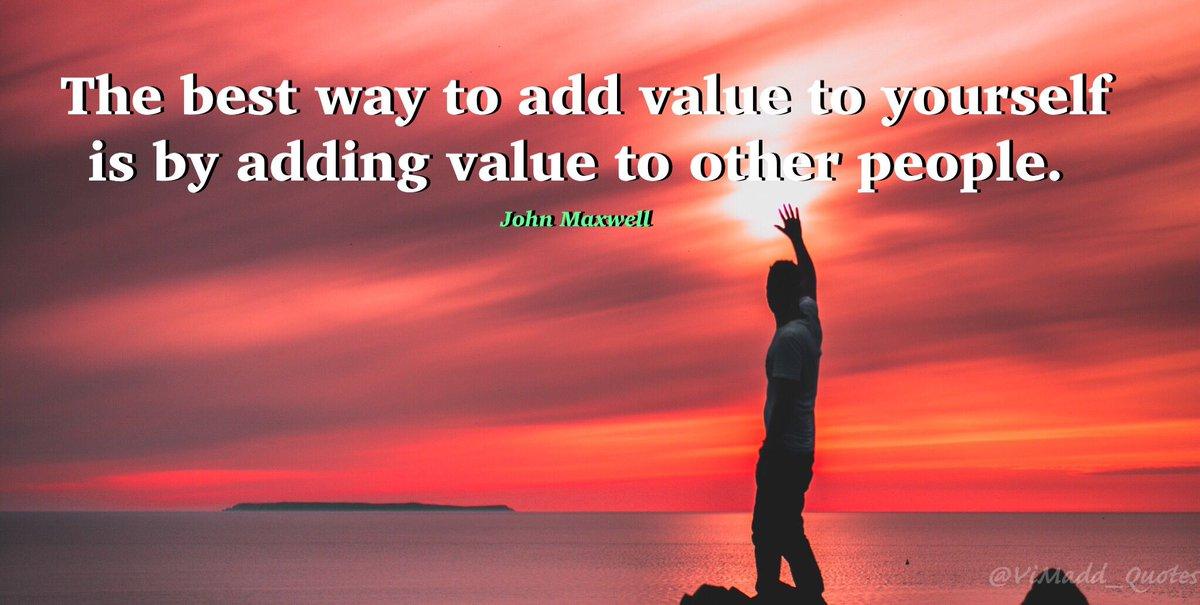
In 2012, a LinkedIn recruiter named Stephanie was asked to list the three people who had the most influence on her career. Adam Rifkin was shocked to learn that he appeared on her list, because they had met only once. Stephanie was looking for a job and met Rifkin through a friend of a friend. He gave her advice primarily by text message, and helped her find job leads. She e-mailed him to express her gratitude and offered to reciprocate.
But Stephanie was not just looking to help Rifkin. Instead, she volunteered to attend a 106 Miles meeting of Silicon Valley entrepreneurs so she could help Rifkin help them. At the meeting, Stephanie would give entrepreneurs feedback on their ideas, offer to test their product prototypes, and facilitate connections with potential collaborators and investors. The same thing has happened with many other people whom Rifkin helped.
This is a new spin on reciprocity. In traditional old-school reciprocity, people operated like matchers, trading value back and forth with one another. We helped the people who helped us, and we gave to the people from whom we wanted something in return.
But today, givers like Rifkin are able to spark a more powerful form of reciprocity. Instead of trading value, Rifkin aims to add value. His giving is governed by a simple rule: the five minute favor. “You should be willing to do something that will take you five minutes or less for anybody.”
When Rifkin does ask people for help, he’s usually asking for assistance in helping someone else. This increases the odds that the people in his vast network will seek to add value rather than trade value, opening the door for him and others to gain benefits from people they’ve never helped – or even met. By creating a norm of adding value, Rifkin transforms giving from a zero-sum loss to a win-win gain.
When takers build networks, they try to claim as much value as possible for themselves from a fixed pie. When givers like Rifkin build networks, they expand the pie so that everyone can get a larger slice.
Rifkin’s experience illustrates how givers are able to develop and leverage extraordinarily rich networks. By virtue of the way they interact with other people in their networks, givers create norms that favor adding rather than claiming or trading value, expanding the pie for all involved.
The Ripple Effect
George Meyer is one of the most successful people in American show business. He has been a major contributor to a movie that grossed more than $527 million. He has won seven Emmy Awards. But he is most celebrated in a television phenomenon that has changed the world. Insiders maintain that as much as any person, he is responsible for the success of a show that Time Magazine named the single best television series of the twentieth century, The Simpsons.

Meyer was hired to write for The Simpsons before it premiered in 1989, and he was a major contributor for sixteen seasons as a writer and executive producer. According to journalist David Owen, “Meyer has so thoroughly shaped the program that by now the comedic sensibility of The Simpsons could be viewed as mostly his.”
How does a man like George Meyer become so successful in collaborative work? Reciprocity styles offer a powerful lens for explaining why some people flourish in teams while others fail. Former Oracle executive Liz Wiseman distinguishes between geniuses and genius makers:
- Geniuses tend to be takers: to promote their own interests, they “drain intelligence, energy, and capability” from others.
- Genius makers tend to be givers: they use their “intelligence to amplify smarts and capabilities of other people such that lightbulbs go over people’s heads, ideas flow, and problems get solved.”
How does these differences between givers and takers affect individual and group success?
Collaboration and Creative Character
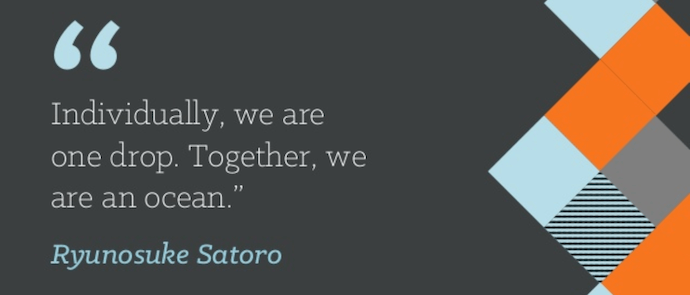
When we consider what it takes to attain George Meyer’s level of comedic impact, there’s little question that creativity is a big part of the equation.
Among writers, the most popular task was typically to write the first draft of an episode, as it allowed them to put their creative stamp on it. Meyer would generate plenty of ideas for episodes, but he rarely wrote the first draft. Instead, feeling that his skills were needed more in rewriting, he took responsibility for the dirty work of spending months helping to rewrite and revise each episode.
This is a defining feature of how givers collaborate: they take on the tasks that are in the group’s best interest, not necessarily their own personal interests. This makes their group better off: studies show that on average, the more giving the group members do, the higher the quantity and quality of their groups’ products and services. But it’s not just their groups that get rewarded: successful givers expand the pie in ways that benefit themselves as well as their groups.
Writer Tim Long shared that “on The Simpson’s, Meyer surrendered himself to the show. Intuitively, he understood that the best thing for him was for the show to be as good as possible.”
There’s a name for Meyer’s actions: in the world of mountaineering, it’s called expedition behavior. The term was coined by the National Outdoor Leadership School (NOLS), which has provided wilderness education to thousands of people, including crews of NASA astronauts. Expedition behavior involves putting the group’s goals and mission first, and showing the same amount of concern for others as you do for yourself.
Part of Meyer’s success came from expanding the pie: the more he contributed to the success of his shows, the more success there was for the whole team to share.
But Meyer’s expedition behavior also changed the way his colleagues saw him. When givers put a groups interest ahead of their own, they signal that their primary goal is to benefit the group. As a result, givers earn the respect of their collaborators.
In a classic article, the psychologist Edwin Hollander argued that when people act generously in groups, they earn idiosyncrasy credits – positive impressions that accumulate in the minds of group members. Since many people think like matchers, when they work in groups, it’s very common for them to keep track of each member’s credits and debits. Once a group member earns idiosyncrasy credits through giving, matchers grant that member a license to deviate from a group’s norms or expectations.
On The Simpsons, Meyer amassed plenty of idiosyncrasy credits, earning latitude to contribute original ideas and shift the creative direction of the show.
One of the best things about developing that credibility was if I wanted to try something that was fairly strange, people would be willing to give it at least a shot. They ended up not rewriting my stuff because they knew I had a decent track record. I think that people saw that my heart was in the right place – my intentions were good. That goes a long way.
–George Meyer, Writer and Producer
George Meyer’s success rippled, cascaded, and spread to the people around him. His colleagues call him a genius, but it’s striking that he has also been a genius maker. By helping his fellow writers on The Simpsons, Meyer made them more effective at their jobs, multiplying their collective effectiveness. A colleague commented, “Meyer’s willingness to volunteer for unpopular tasks, help other people improve their jokes, and work long hours to achieve high collective standards. He makes everyone works harder.”
Finding the Diamond in the Rough
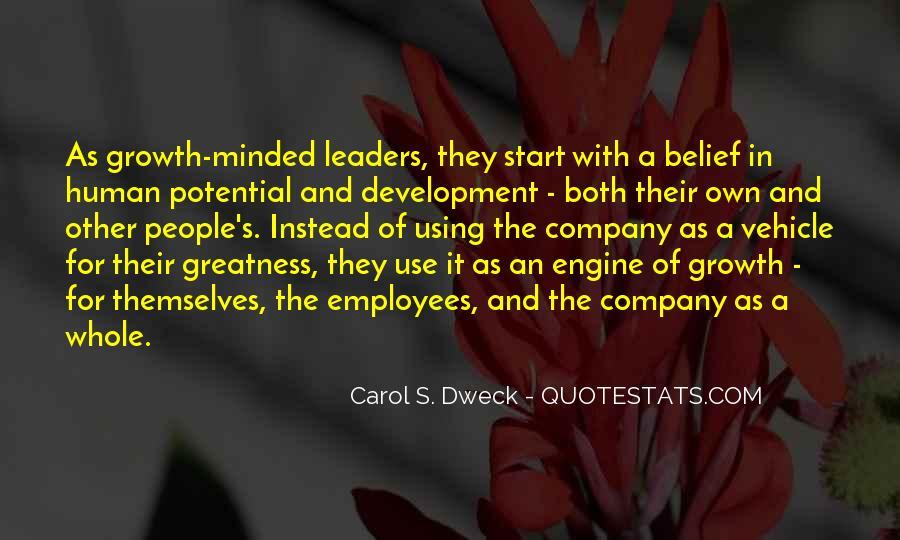
In the early 1980s, psychologist Dov Eden published a series of extraordinary results. He could tell which soldiers in the Israel Defense Force (IDF) would become top performers before they ever started training.
In one study, Eden examined comprehensive assessments of nearly a thousand soldiers who were about to arrive for training with their platoons. He had their aptitude test scores, evaluations during basic training, and appraisals from previous commanders. Using this information alone, Eden was able to identify a group of high-potential trainees who would emerge as stars.
Over the next eleven weeks, the trainees took tests measuring their expertise in combat tactics, maps, standard operating procedures, and skill in operating a weapon. Sure enough, the candidates Eden spotted as high-potentials at the outset did significantly better than their peers: they scored 9 percent higher on the expertise tests and 10 percent higher on weapons evaluation
What information did Eden use to identify high-potentials? If you were a platoon leader, what characteristics would you value above all others in your soldiers?
Eden drew inspiration from a classic study led by Harvard psychologist Robert Rosenthal, who teamed up with Lenore Jacobson, the principal of an elementary school. In eighteen different classrooms, students from kindergarten through fifth grade took a Harvard cognitive ability test. The test objectively measured students’ verbal and reasoning skills, which are known to be critical to learning and problem solving. Rosenthal and Jacobson shared the test results with the teachers: approximately 20 percent of students had shown the potential for intellectual blooming.
When teachers believed their students were bloomers, they set high expectations for their success.
The Harvard test was discerning when the students took the cognitive ability test a year later, the bloomers improved more than the rest of the students. Based on these results, intelligence seems like a strong contender as the key differentiating factor for the high-potential students. But it was not.
The students labeled as bloomers did not actually score higher on the intelligence test. Rosenthal chose them at random.
The study was designed to find out what happened to students when teachers believed they had high potential. Rosenthal randomly selected 20 percent of the students in each classroom to be labeled as bloomers, and the other 80 percent were a control group. The bloomers weren’t any smarter than their peers – the difference “was in the mind of the teacher.”
Yet the bloomers became smarter than their peers, in both verbal and reasoning ability. And the students labeled as bloomers continued to show gains after two years, even when they were being taught by entirely different teachers who didn’t know which students had been labeled as bloomers. Why?
Teachers’ belief created self-fulfilling prophecies. When teachers believed their students were bloomers, they set high expectations for their success. As a result, the teachers engaged in more supportive behaviors that boosted the students’ confidence and enhanced their learning and development.
As in the elementary school study, Eden had selected these trainees as high-potentials at random. He was testing the effect of leaders believing that their trainees were high-potentials. Just like the teachers, when the platoon leaders believed in the trainees potential, they acted in ways that made this potential a reality. The platoon leaders who held high expectations of their trainees provided more help, career advice, and feedback to the trainees. The supportive behaviors of the platoon leaders boosted the confidence and ability of the trainees, enabling and encouraging them to achieve higher performance.
Low expectations trigger a vicious cycle, constraining development and motivation of others.
Evidence shows that leaders’ beliefs can catalyze self-fulfilling prophecies in many settings beyond the military. Management researcher Brain McNatt conducted an exhaustive analysis of seventeen different studies with nearly three thousand employees in a wide range of work organizations, from banking to retail sales to manufacturing. Overall, when managers were randomly assigned to see employees as bloomers, employees bloomed.
McNatt concludes that these observations “can have a fairly large effect on performance.” He encourages managers to recognize the power and influence in:
(a) having a genuine interest and belief in the potential of their employees and;
(b) engaging in actions that support others and communicate that belief.
Some managers and teachers have already internalized this message. They see people as bloomers naturally, without ever being told. This is rarely the case for takers, who tend to place little trust in other people. Because they assume that most people are takers, they hold relatively low expectations for the potential of their peers and subordinates.
These low expectations trigger a vicious cycle, constraining development and motivation of others. As a result, takers frequently fail to engage in the types of supportive behaviors that are conducive to the confidence and development of their peers and subordinates.
Matchers are better equipped to inspire self-fulfilling prophecies. Because they value reciprocity, when a peer or subordinate demonstrates high potential, matchers respond in kind, going out of their way to support, encourage, and develop their promising colleagues and direct reports. But the matcher’s mistake lies in waiting for signs of high potential. Since matchers play it safe, they often wait to offer support until they’ve seen evidence of promise. Consequently, they miss out on opportunities to develop people who don’t show a spark of talent or high potential first.
Givers don’t wait for signs of potential. Because they tend to be trusting and optimistic, about other people’s intentions, in their roles as leaders, managers, and mentors, givers are inclined to see the potential in everyone as bloomers. By default, givers start by viewing people as bloomers. They simply start by seeing everyone as talented and tries to bring out the best in them.
Conclusion
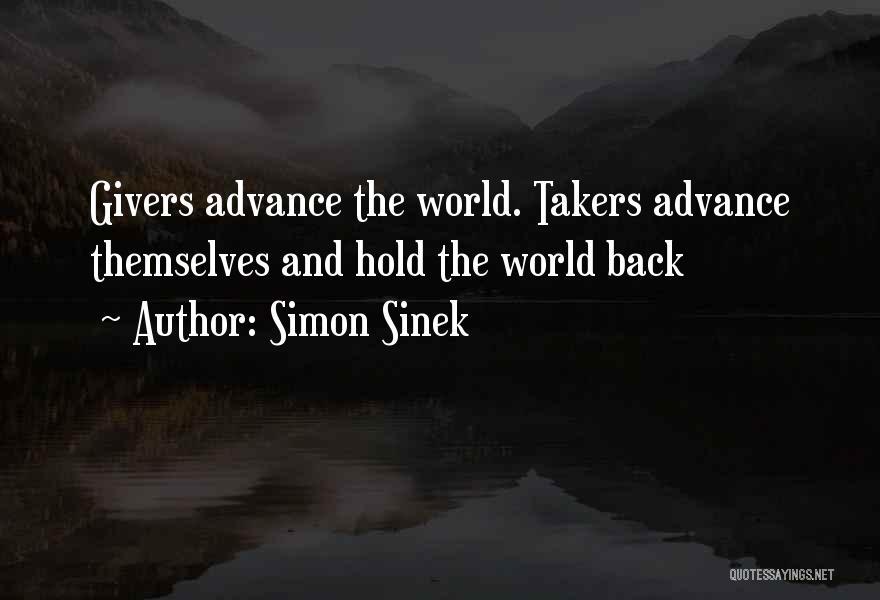
The successful people whom the author admire the most are givers and he took it as his responsibility to try and share what he learned from them. When he arrived at Wharton Business School, his charge was to teach some of the world’s finest analytic minds to become better leaders, managers, and negotiators. He decided to introduce them to reciprocity styles, posing the question that animated the introduction of this book: who do you think ends up at the bottom of the success ladder?
The verdict was nearly unanimous: givers. When the author asked who rises to the top, the students were evenly split between matchers and takers. So he chose to teach them something that struck them as heretical. He told them, “You might be underestimating the success of givers.”
It’s true that some people who consistently help others are the ones who fall to the bottom. But this same orientation toward giving, can also enable people to rise to the top. The author urged them “to focus attention and energy on making a difference in the lives of others, and success might follow as a by-product.” He knew he was fighting an uphill battle, so he decided to prove them wrong by writing this book, Give and Take.
Although many of us hold strong giver values, we are often reluctant to express them at work. But the growth of teamwork, service jobs, and social media has opened new opportunities for givers to develop relationships and reputations that accelerate and multiply their success.
In the mind of a giver, the definition of success itself takes on a distinctive meaning. Whereas:
- takers view success as attaining results that are superior to others, and
- matchers see success in terms of balancing individual accomplishments with fairness,
- givers characterize success as individual achievements that have a positive impact on others.
Taking this definition of success might require dramatic changes in the way that organizations hire, evaluate, reward, and promote people. It would mean paying attention not only to the productivity of individual people but also to the ripple effects of this productivity on others.
The connection between individual and collective success underlies every story of successful givers that the author studied and featured in his book, among them Adam Rifkin and George Meyer.
- As an entrepreneur, Adam Rifkin built his network of influential people by trying to help everyone he met, launching successful companies and enabling thousands of colleagues to find jobs, develop skills, and start productive businesses along the way.
- As a comedy writer, George Meyer earned Emmys and established a reputation as the funniest writer in Hollywood while elevating the effectiveness of and opening the doors for the people who collaborated with him.
This is what the author find most magnetic about successful givers: they got to the top without cutting others down, finding ways of expanding the pie that benefit themselves and the people around them.
Armed with this knowledge, the author came across people who became strategic matchers, helping them in the hopes of developing the relationships and reputations necessary to advance their own success.
There’s a fine line between giving and clever matching, and this line blurs depending on whether we define reciprocity styles by the actions themselves, the motives behind them, or some combination of the two. It’s a deep philosophical question, and it’s easy to identify with a range of views on how strategic matchers should be evaluated.
- On the one hand, even if the motives are mixed, helping behaviors often add value to others, increasing the total amount of giving in a social system.
- On the other hand, our behaviors leak traces of our motives. If recipients and witnesses of our giving begin to question whether the motives are self-serving, they’re less likely to respond with gratitude or elevation. When strategic matchers engage in disingenuous efforts to help others primarily for personal gain, they may be hoisted by their own petard: fellow matchers may withhold help, spread negative reputational information, or find other ways to impose a taker tax.
To avoid these consequences, would-be matchers may be best served by giving in ways that they find enjoyable, to recipients whose well-being matters to them. That way, even if they don’t reap direct or karmic rewards, matchers will be operating in giver’s mind-set, leading their motives to appear – and become – more pure.
Ultimately, by repeatedly making the choice to act in the interest of others, strategic matchers may find themselves developing giver identities, resulting in a gradual drift in style toward the giving end of the reciprocity spectrum.
We spend the majority of our waking hours at work. This means that what we do at work becomes a fundamental part of who we are. If we reserve giver values for our personal lives, what will be missing in our professional lives?
By shifting ever so slightly in the giver direction, we might find our waking hours marked by greater success, richer meaning, and more lasting impact.
University of Experience is a special Aboitiz Eyes section that focuses on leadership insights from the unique experiences, perspectives, and wisdom of leaders who have stood at the helm of Aboitiz over the years.
If you enjoyed this article, would like to suggest a topic, or simply share your feedback, please CLICK HERE.

